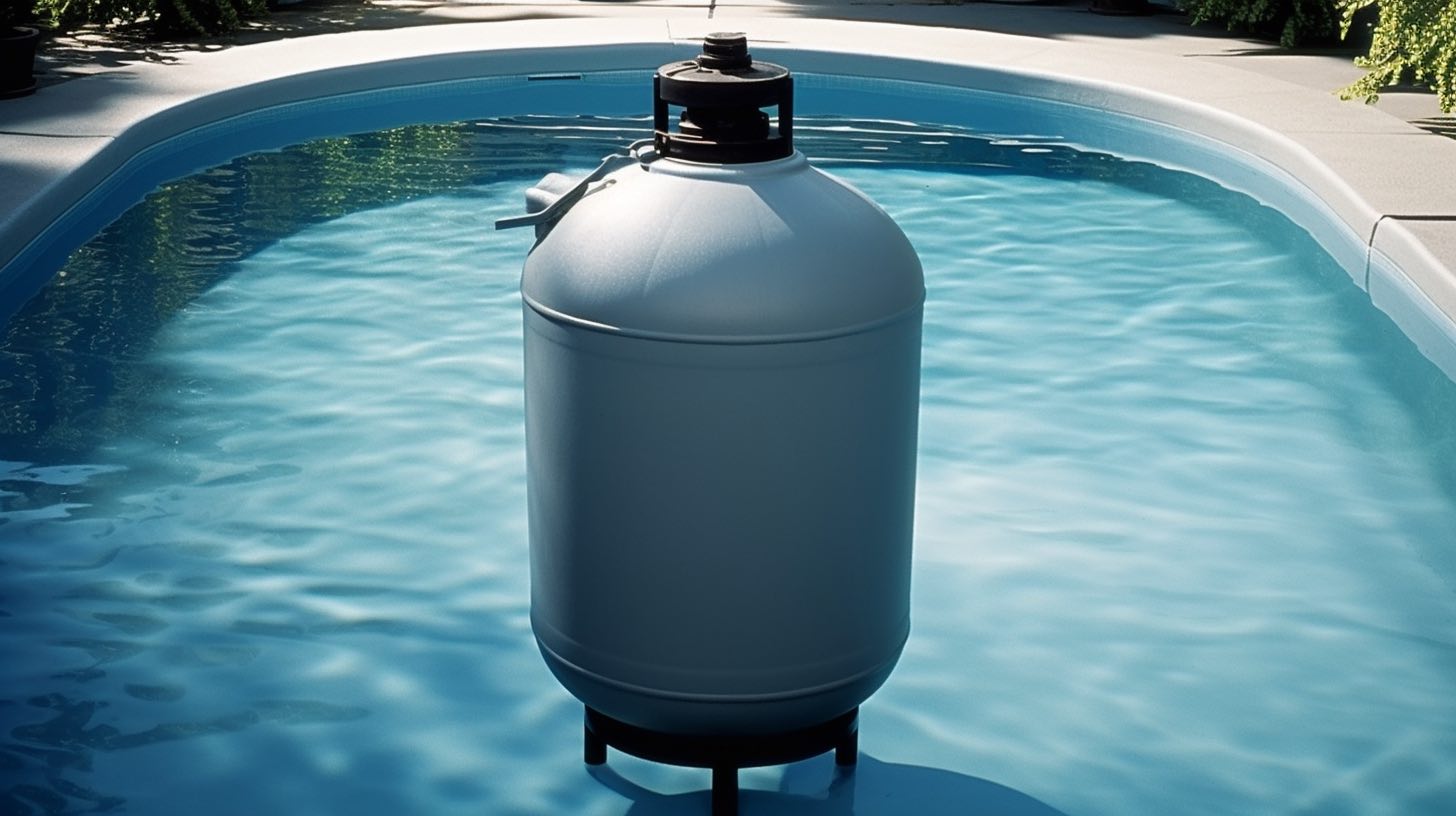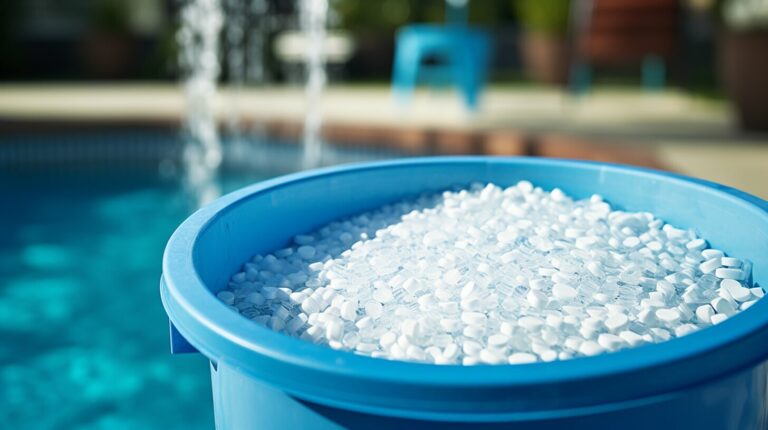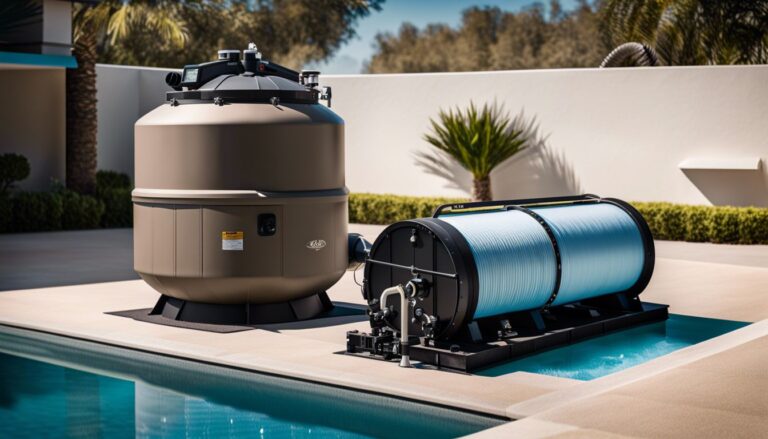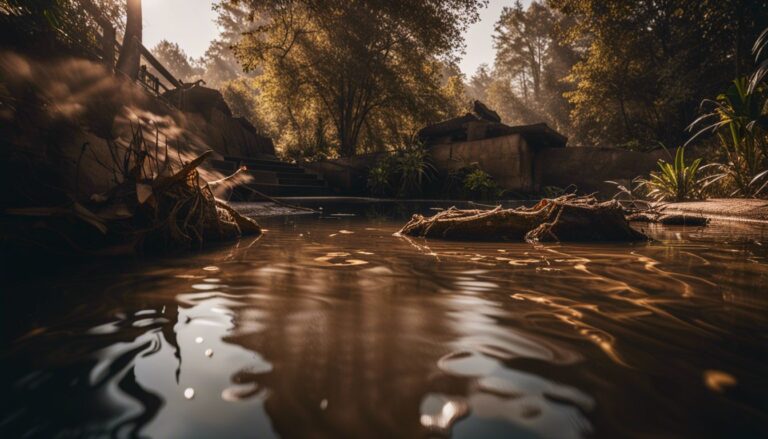How Often Should I Backwash My Pool? 2023 Guide
How Often Should I Backwash My Pool
how often should I backwash my pool? Many pool owners have this question. This article breaks down everything you need to know – from the basics of backwashing to the signs indicating when it’s time for a clean-up.
Let’s dive right in and clear the murky waters of pool maintenance!
What is Backwashing, and How Does it Work?
Backwashing is crucial to pool maintenance, especially for those with sand filters. The process involves reversing the water flow through your filter system to clear out accumulated debris and contaminants that have been trapped over time.
It starts by turning off your pool pump before changing the setting on your multiport valve to ‘backwash.’ This redirects water from your pool through the filter media in the opposite direction.
The backwash water, carrying all unwanted materials like dirt or live algae, exits via the waste line or backwash hose. As this dirty water leaves, any captured debris in its path takes a long. It cleanses the filtering material inside the filter tank, which could be silica sand for a sand filter or diatomaceous earth (DE) if you own a DE filter.
How Often Should You Backwash a Pool Filter?

The frequency of backwashing a pool filter depends on factors such as pool usage and the type of filter installed.
How Often Should I Backwash My Pool?Factors to consider (e.g., pool usage, filter type)
Determining how often to backwash your pool filter depends on various factors specific to your situation.
- Pool Usage: If the pool is used more frequently, it will require more frequent Backwashing. Swimmers introduce organic materials and other debris that can clog the filter faster. for instance, a DE (diatomaceous earth) filter system needs cleaning six or more times yearly, while sand filters typically require monthly Backwashing.
- Filtration System: The efficiency and capacity of your filtration system also play an important role in determining the frequency of Backwashing.
- Water Quality: Cloudy or murky water could indicate a dirty filter that requires immediate Backwashing.
- Effects of Weather: Pools exposed to heavy rain or a major storm may require extra Backwashing due to increased debris.
- Filter Pressure: An increase in pressure gauge reading is usually a sign that the filter is clogged and needs to be cleaned. Generally, it’s time to backwash when the pressure rises 8-10 psi above its starting level.
General guidelines for different filter types (sand, DE, cartridge)
Pool filters come in three main types: sand, DE (diatomaceous earth), and cartridge. Each of these requires a different maintenance routine and frequency of Backwashing for optimal performance and longevity. Here are the general guidelines for each filter type:
| Filter Type | Frequency of Backwashing | Other Maintenance |
|---|---|---|
| Sand | Backwash as needed, typically once a month. Sand filters need more frequent backwashing than DE filters. | Cartridge filters do not require Backwashing. |
| DE (Diatomaceous Earth) | Backwash as needed, typically once a month. Sand filters need more frequent Backwashing than DE filters. | Requires cleaning at least once annually. |
| Cartridge | About once a month during pool season. DE filters require lesBackwashingbackwashing than sand filters. | Regular cleaning and replacement of the cartridge as per the manufacturer’s instructions. |
Remember, the backwashing process for each filter type can vary. Therefore, be sure to follow the manufacturer’s guidelines for proper Backwashing.
Signs that Your Pool Filter Needs Backwashing
Several signs indicate your pool filter needs backwashing, including decreased water flow, increased pressure gauge reading, and cloudy or murky water.

Decreased water flow
If you notice that the water flow in your pool is weaker than usual, it may be a sign that your pool filter needs to be backwashed. A clogged or dirty filter can restrict water circulation and decrease flow.
This can happen over time as the filter collects dirt and debris from the pool. Regular Backwashing helps to remove these impurities and maintain optimal water flow for a clean and healthy swimming experience.
Increased pressure gauge reading
An increased pressure gauge reading is one of the signs that your pool filter needs to be backwashed. The pressure gauge on your pool’s filtration system measures the pressure inside the filter.
As debris and contaminants accumulate, they can restrict water flow and cause the pressure to rise. If you notice a significant increase in the pressure gauge reading, your filter is clogged and needs cleaning.
This is important because a dirty or clogged filter can result in decreased water circulation, poor water clarity, and inefficient filtration. By regularly monitoring your pressure gauge readings, you can stay on top of when it’s time to backwash your pool filter for optimal performance and clean swimming pool water.
Cloudy or murky water
Cloudy or murky water is a common problem that pool owners may encounter, and it can be quite frustrating. There are several reasons why your pool water may appear cloudy, such as improper chlorine levels, imbalanced pH and alkalinity, or high calcium hardness levels.
However, a dirty pool filter is one of the main causes of cloudy water. When the filter media becomes clogged with dirt and debris, it loses its ability to catch particles in the water effectively.
This results in poor filtration and cloudy water. So if you notice that your pool water is not as clear as it should be, it may be time to backwash your pool filter to remove all the accumulated dirt and restore proper filtration.
How to Properly Backwash a Pool Filter
To properly backwash a pool filter, follow these simple steps for optimal results. Want to know the best tips and tricks? Keep reading!
Step-by-step instructions
To backwash your pool filter, follow these simple steps:
- Turn off the pool pump: Before starting the backwashing process, make sure to turn off the pool pump to avoid any accidents.
- Rotate or switch the valve: Depending on the type of filter you have, rotate the multiport valve to the “Backwash” position for sand filters or switch the valve piston to the backwash position for slide valves.
- Attach a backwash hose: Connect one end of a backwash hose to your filter system’s waste line or drain port. Make sure it is tightly secured.
- Open the air relief valve: If your filter has an air relief valve, open it before backwashing. This will release any trapped air in the system.
- Start the pump and watch for dirty water: Turn on the pool pump and observe as dirty water starts flowing through the backwash hose. This indicates that debris and buildup are being flushed out of your filter.
- Monitor water clarity: Keep an eye on the water from the backwash hose. Once it becomes clear, you can proceed to the next step.
- Rinse your filter: Switch or rotate the valve to rinse mode after Backwashing. This step helps remove debris from your filter media and ensures optimal filtration.
- Run rinse cycle for 1-2 minutes: Turn on the pump again and let it run for about 1-2 minutes in rinse mode. Clear water should flow through your sight or view glass during this time.
- Return to normal filtration mode: Switch or rotate your filter’s valve back to its normal filtration position after rinsing. Your pool filter is now clean and ready to operate efficiently once again!
Tips for optimal results
There are a few key tips for optimal results when backwashing your pool filter. First, follow the manufacturer’s instructions for your specific type of filter.
Each filter may have slightly different requirements or steps for Backwashing. Additionally, it’s a good idea to backwash and rinse the filter once every two weeks, preferably right after vacuuming the pool.
This helps ensure that debris or contaminants are effectively removed from the filter system. Finally, suppose your pressure gauge shows a significant increase in pressure after backwashing. In that case, it may be necessary to repeat the process or consider cleaning or replacing the filter media if it is particularly dirty.
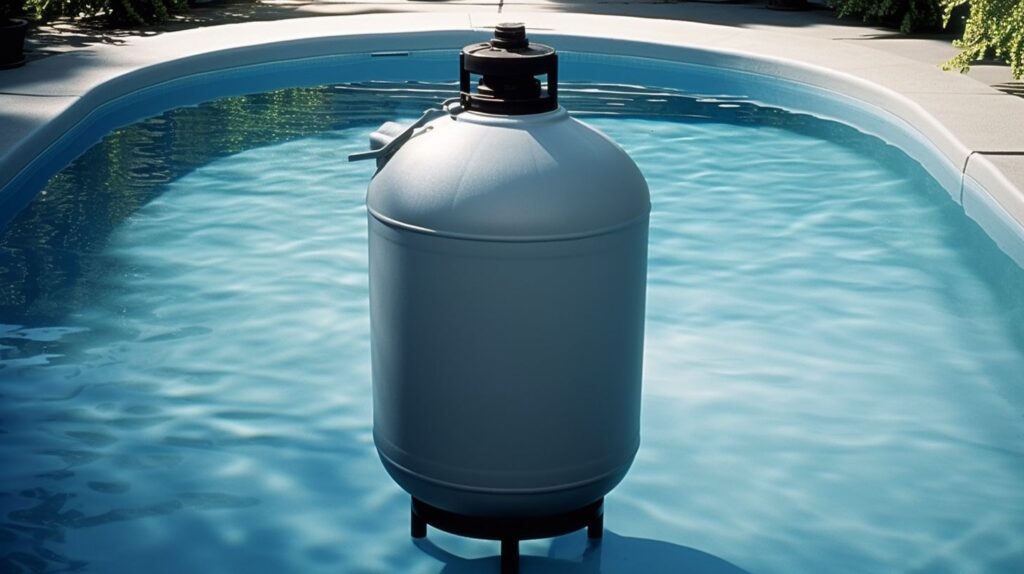
When Not to Backwash Your Pool Filter
There are certain situations where Backwashing may not be necessary or advisable. Read the full blog post to find out when to avoid this process and learn more about maintaining your pool filter!
Situations where Backwashing may not be necessary or advisable
- If the pool water is clear and there are no signs of debris or dirt in the filter, Backwashing may not be necessary.
- When the pressure gauge on the filter system is still within the normal range, it may indicate that the filter still functions effectively and does not require Backwashing.
- If the pool has recently received chemical treatments or the water chemistry is unbalanced, it may be best to avoid backwashing to maintain the effectiveness of those treatments.
- In cases where a new filter has been installed and has not yet accumulated a significant amount of debris, Backwashing may not be needed.
- During periods of heavy rain or after a major storm, checking the pool’s water clarity may be advisable before automatically initiating a backwashing cycle.
- Suppose you have recently performed other maintenance tasks, such as cleaning out skimmer baskets or manually removing visible debris from the pool. In that case, there might not be a need for immediate Backwashing.
- It is important to consult with local authorities or professionals for guidance on when to backwash your specific pool based on its unique circumstances and requirements.
Conclusion and Final Tips for Pool Maintenance
In conclusion, the frequency of backwashing your pool filter depends on factors such as pool usage and filter type. Generally, it is recommended to backwash a pool once every 4-6 weeks of regular use.
However, specific instances, such as treating cloudy water or after an algae bloom, may require more frequent Backwashing. Always follow proper maintenance guidelines and check the pressure gauge for optimal filtration and water clarity.
Happy swimming!
FAQs
What is the Ideal Frequency for Backwashing a Pool?
Backwashing your swimming pool’s filter requires adherence to some considerations, including your pool size, type of filter system, and usage patterns. A good rule of thumb? Initiate a backwash cycle when your filter’s pressure gauge hits 8-10 psi above the standard operating level.
Spotting the Right Time to Backwash: What are the Indications?
If you observe cloudy pool water or difficulty sustaining its chemical equilibrium, it might be time to engage your backwash setting. Other tell-tale signs include a reduction in the water flow rate and an uptick in the filter gauge pressure.
Is Over-Backwashing a Pool Detrimental?
In the quest for clean, sparkling water, one might overdo Backwashing. While a clean filter is great, excessive Backwashing might lead to water wastage. Always adhere to the manufacturer’s advice for your specific filter system and initiate backwashing only when needed.
Alternatives to Regular Backwashing: Are There Any?
Indeed, there are alternatives! Consider the DE (Diatomaceous Earth) filter or the cartridge filter as substitutes for sand pool filters. These filter types demand less Backwashing. Instead, the first step involves removing the cartridges or grids for a rinse or replacement.
The good news? This simple process can help maintain clean water without frequent Backwashing. Additionally, regular check-ups and cleaning of the skimmer baskets can prevent debris from infiltrating the filter system.
Additional Backwashing Information
The best way to backwash your pool includes several steps, regardless of whether you’re dealing with an above-ground or inground pool. Starting from a filter valve in the backwash position, it’s a matter of ensuring enough water to move the filtering media (like pool filter sand) inside your sand filter tank.
The backwash (push-pull valve) offers different settings, like rinse and backwash settings. After a backwash cycle, the rinse setting will return the filter medium to its original position.
During the backwash pool process, your pool filter collects dirt, causing water pressure to increase over a given time. This net effect is evident on the filter’s pressure gauge, usually at the top. Proper pool maintenance often includes robotic pool cleaners and regular checks of the square-inch pressure on the gauge.
Remember, DE filters use DE powder, which coats the grids inside the filter. The top of the sand bed will look dirty after Backwashing. This is normal.
Remember, backwashing your pool is a simple step-by-step guide to ensure cleanliness. Don’t worry – with these easy steps and a consistent schedule; you’ll avoid cloudy pool water and enjoy a clean pool anytime.
